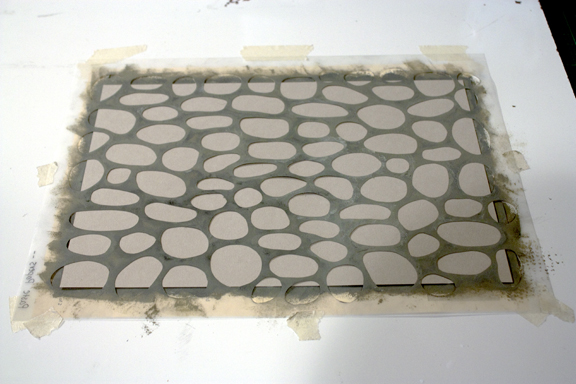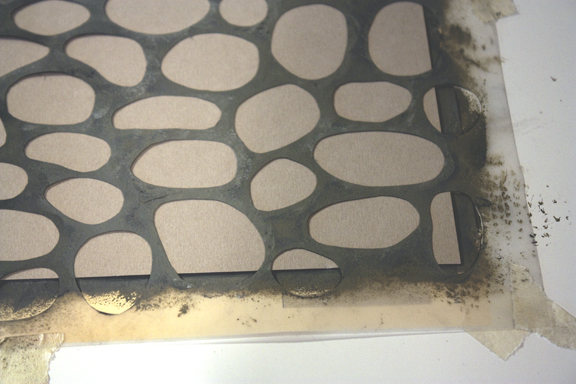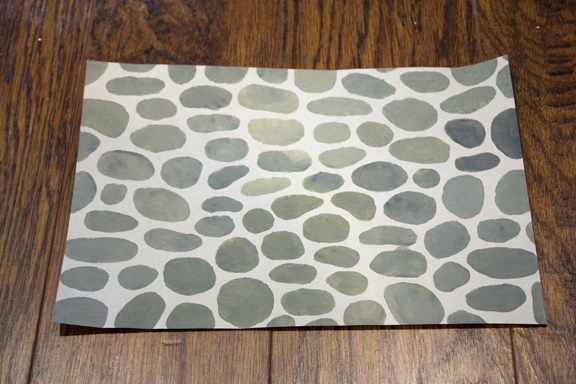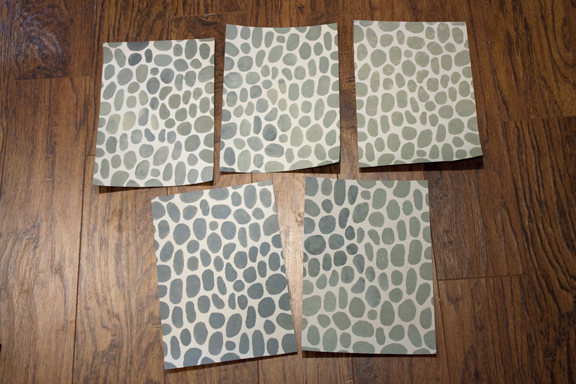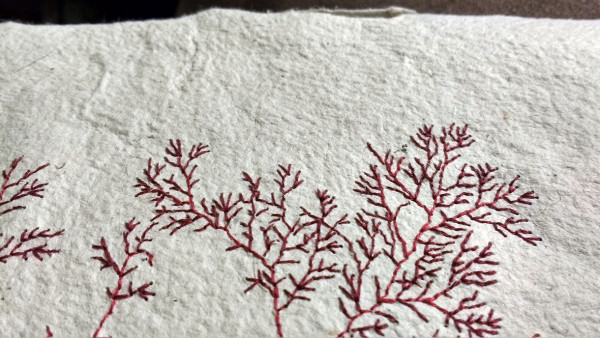I use stenciling as a (sometimes) quick method for decoration in various components of the binding design. It is generally very successful and allows for clean design and a lot of control for the coloring method of your designs. However, there are a few things that I have noticed when using stencils and most of these have occurred in one of my attempts at customized endpapers. These end sheets are part of a set of 6 journals that I was commissioned to make. Every part was customized, starting with the end sheets.
A few things that should be kept in mind for stenciling:
Stencil Material
For this set of books, I used a mylar stencil. This is a good way to make a stencil. It is easy to wash, reusable and isn’t effected by water or paint. You also have the ability to trace your drawings or sketches so that you don’t have to worry about transferring artwork. I have used a paper stencil before, but reusing it is not generally an option.
Detail and Cleanliness
In order for the stencil to give its potential clean edges, it is wise to use a temporary fixative. I have been using a 3M spray adhesive for most of my stenciling but I adjust the way it is used depending upon what the substrate is. If I am working on book cloth, a stronger adhesive is fine, but for paper you want something weaker if any at all. You can see in the images above that I taped my substrate (paper) down to a board, then I taped the stencil on top of that.
Water content of paint & Type of paint
The moisture in the paint you use for the stencil should be controlled carefully. It is common to thin down paint so that it goes on more easily. However, when I have stenciled on book cloth, I have accidentally added too much water causing the backing paper to pucker and release from the cloth. Dryer is better. Some papers are more tolerable of moisture, but it is always wise to test the paint you want to use on a scrap of the cloth or paper.
Edition limitations
The stencil I used for the Set of 6 was a bit of a pain. This could be due to the lack of adhesive to keep the stencil in place, but it was really time consuming to achieve the coloring the way I wanted it for the whole stencil. I tried a range of brush sizes as well as brush types on the 12 sheets but I only achieved one pace: slow. I suppose one thing to keep in mind…stenciling is kind of like printing but it is still done by hand. It straddles between hand painted and printed matter. So take that into consideration when decided what techniques to implement. And test, test, test.

